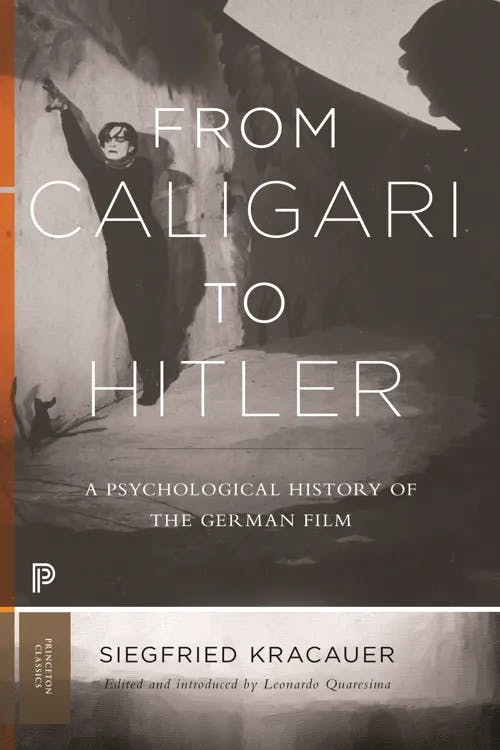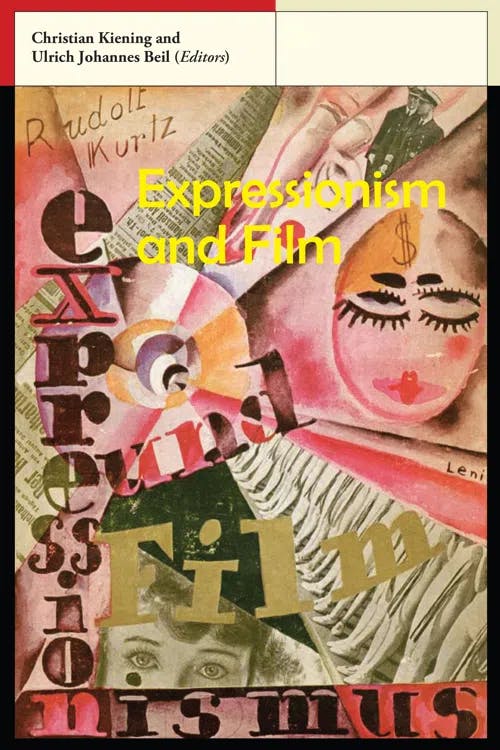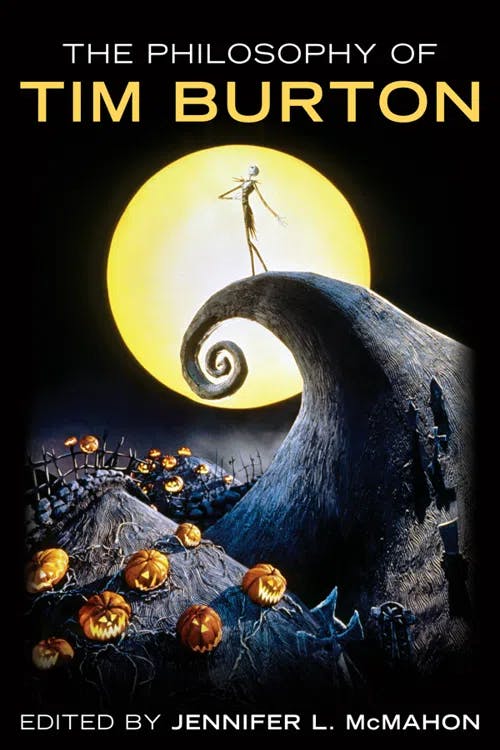What is German Expressionism?
PhD, Media Arts (Royal Holloway, University of London)
Date Published: 04.05.2023,
Last Updated: 20.07.2023
Share this article
The origins of German Expressionism
German Expressionism was an art movement developed in the beginning of the twentieth century. Although Expressionism played host to famous modern artists like Egon Schiele, Edvard Munch and Wassily Kandinsky, German Expressionism is widely accepted as a particularly significant development for the medium of film. Before the First World War, European cinema was primarily what Tom Gunning calls “cinema of attractions” (1990 [2019]). In his essay by the same name, appearing in Early Cinema: Space, Frame, Narrative, Gunning asserts the cinema of attractions as “an exhibitionist cinema”; that is, cinema’s “ability to show something” (1990 [2019]). At this time, film was first and foremost an exploration of what the medium could do visually – the appreciation of the way film could show the world as it was or create new worlds through the manipulation of mis-en-scène — usually without the structure of a cohesive narrative.
The employment of cinema as a playful exploration of visual spectacle began to change in Germany during the years surrounding the First World War. This was due to several key factors. Firstly, in 1916, the demand for domestically made films increased with the German prohibition of foreign cinema. By the time this ban was lifted, Germany had a thriving film industry. Secondly, the devastation of the First World War changed the type of art, literature, and film that Europe produced, something that was acutely felt in Germany. This meant that by the 1920s, German film had an independent means of production and a distinct perspective. The emergence of a highly stylized type of cinema, German Expressionism, was the result of these changes.
Cinema and German identity
The dark and heavy subject matter of the early German Expressionist movement also reflected the fraught German identity of the time. As Lotte H. Eisner explains in The Haunted Screen,
poverty and constant insecurity help to explain the enthusiasm with which German artists embraced this movement which, as early as 1910, had tended to sweep aside all the principles which had formed the basis of art until then (1952).
The First World War brought loss and bloodshed and left German values and resources in a further state of instability. The collapse of German imperialism and a subsequent economic recession gave rise to a tumultuous post-war Germany identity. This turmoil was expressed visually through a new, Expressionist style of film that took on dark mythological worlds that often conflicted with cinematic realism both aesthetically and in its subject matter. That is not to say that German Expressionism was a means of escapism, but rather a conveyance of the anxiety of the time. Eisner asserts, “mysticism and magic, the dark forces to which Germans have always been more than willing to commit themselves, had flourished in the face of death on the battlefields” (1952).
German Expressionist films often take place in strange worlds inhabited by spirits, vampires, and mystics, but what is perhaps most striking about these films is the representation of the world of the characters. German Expressionist film was concerned with subjective psyche, rather than the objectivity of pre-war cinema, and the on-screen world reflected the dark and abstract inner workings of the characters who inhabit it. In From Caligari to Hitler, Siegfried Kracauer explains,
In exposing the German soul, the postwar films seemed to make even more of a riddle of it. Macabre, sinister, morbid: these were the favorite adjectives used in describing them (2019).
Siegfried Kracauer
In exposing the German soul, the postwar films seemed to make even more of a riddle of it. Macabre, sinister, morbid: these were the favorite adjectives used in describing them (2019).
As we will come to see, German Expressionism explored psychological and emotional turmoil through a distinct set of visual conventions, resulting in a dark, sophisticated, and intellectual cinematic style. As a result of this distinct story-telling, German Expressionism would come to change the function and possibility of film, opening the medium up to a rich array of filmic devices. The following article will explore some of the many ways these stylistic devices have become encoded into contemporary filmic language.
Characteristics of German Expressionism
A highly stylized aesthetic and a subjective, psychological perspective made German Expressionist film immediately distinguishable. Set in obtrusively shadowy and strange worlds, German Expressionist film often features sinister and unearthly characters, filmed at unnatural angles in high contrast lighting. This gives these films a sense of tension appropriate for the eerie subject matter. One quintessential film from the movement was The Cabinet of Dr. Caligari (Wiene, 1920):
This emblematic piece of German Expressionist cinema follows protagonist, Franzis (Friedrich Feher), as his life is upended by the hypnotist, Dr. Caligari (Werner Krauss). Caligari controls a murderous somnambulist named Cesare (Conrad Veidt) who has been causing havoc in Franzis’s town. After Cesare kills Franzis’s companion, and attempts to kidnap Franzis’s love interest, the somnambulist falls off a ledge to his death. Franzis pursues Caligari to an “insane asylum”, where he is shocked to find Caligari is the asylum director. Franzis tries to uncover Caligari’s true nature, and is almost successful, until it is revealed that Franzis himself is a patient at the asylum, suggesting that his own insanity has constructed the events of the story.
Often considered the first horror film, The Cabinet of Dr. Caligari is significant in its storytelling innovation, providing early examples of plot twists, flashbacks, and unreliable narration. What The Cabinet of Dr. Caligari is perhaps most notable for, however, is the way it exhibits German Expressionism’s tendency to reflect the internal state of the characters through warped and strange mis-en-scène. High contrast, exaggerated angles and fragmented and unnatural scenery make up the world of The Cabinet of Dr. Caligari. In From Caligari to Hitler, Kracauer addresses the function of this particular aesthetic:
The canvases and draperies of Caligari abounded in complexes of jagged, sharp-pointed forms strongly reminiscent of gothic patterns. Products of a style which by then had become almost a mannerism, these complexes suggested houses, walls, landscapes. Except for a few slips or concessions—some backgrounds opposed the pictorial convention in too direct a manner, while others all but preserved them—the settings amounted to a perfect transformation of material objects into emotional ornaments (2019).
This describes the way that the world of the film might disclose a character’s inner state, a stylistic choice that starts to make sense as it is revealed that the central character lives in a psychiatric institution and that the film’s whole narrative could be a mere delusion or hallucination. The establishing shot of the film, for example, shows a highly stylized town, where the roofs lean dramatically to form what looks like a mound of spikes. Rather than capturing a real location on film, German Expressionism used artistic sets to emphasize the subjectivity of this type of storytelling; the world we see is the reality of a man with a fragmented and abstract grasp of reality.
Apart from giving the viewers a visual sense of emotional subjectivity, The Cabinet of Dr. Caligari also serves as an allegory of post-war Germany. The character of Dr. Caligari himself controls the movements of a sleepwalking Cesare, symbolizing the steady rise of authoritarianism at the time. Kracauer describes the film as a “revolutionary story”, explaining how it “stigmatized the omnipotence of a state authority manifesting itself in universal conscription and declarations of war” (2019). The character of Cesar, asserts Kracauer, had been created “with the dim design of portraying the common man who, under the pressure of compulsory military service, is drilled to kill and to be killed” (2019). So not only was German Expressionist cinema highly subjective, using external renderings to elucidate internal states, but it captured something of the postwar German zeitgeist.
The influence of German Expressionism
Despite being developed across the Atlantic, German Expressionism had a profound effect on the development of Hollywood cinema. During the rise of the Nazis, many German filmmakers escaped to the US, bringing their dark and exaggerated aesthetic and introspective subject matter to the American film industry. The 1940s Hollywood genre of film noir is an example of this. Film noir is characterized by a world of shadows, where the settings and lighting reveal the duplicitous nature of the characters and stories that took place there. The way that this mise-en-scène indicates the moody, dark, and uncertain mental state of the characters is often attributed to the influence of German Expressionism. Not only are there obvious aesthetic parallels between the two genres, but German Expressionist plot characteristics — like flashbacks and suspense — are also observable as crucial narrative devices in film noir. As Andrew Spicer confirms in Film Noir, “German Expressionism is always cited as the major influence on film noir’s arresting visual style and also its pessimistic mood” (2018). Film noir, in turn, has a recognized legacy of its own, with films like Roman Polanski’s Chinatown (1974), Quentin Tarantino’s Pulp Fiction (1994) and Christopher Nolan’s The Dark Knight (2008) being associated with various iterations of neo-noir cinema. In tracing the influences that shaped these iconic pieces of cinema, German Expressionism emerges as a key development in the history of film.
Another genre which has its roots in German Expressionism is horror. German Expressionist films, like The Cabinet of Dr. Caligari, are often heralded as the earliest form of the horror genre we know today. The way German Expressionism creates suspense, dread, and terror through devices like dark and dynamic shadows, unnatural camera angles and scenery, deeper depths of field, and drawing on dark mythologies and superstitions, are all characteristics found in horror films and horror subgenres. Even the rise in popularity of the vampire film can be attributed to German Expressionist cinema. Films like Interview with a Vampire (Jordan, 1994), Twilight (Hardwicke, 2008) and Dark Shadows (Burton, 2012) follow in the tradition of German Expressionist films like Robert Wiene’s Genuine: The Tragedy of a Vampire (1920) and the iconic Nosferatu (Murnau, 1922). These films combined an eerie world of shadows with an emotional, mythological story to create a sense of twisted and complex subjectivity. In Expressionism and Film, Rudolf Kurtz described the explicit feeling that German Expressionism, and its successor genres, create, writing,
Expressionism lent a hand whenever there was a need to express a particular kind of muted energy that was poised to spring, or whenever one strove to depict the sense of a situation beyond its outward appearance. Whether the liveliness of a cosmopolitan street or the oddness of a setting was to be rendered on a deeper level of consciousness, expressionist form was called on to provide the effect (2016).
Rudolf Kurtz
Expressionism lent a hand whenever there was a need to express a particular kind of muted energy that was poised to spring, or whenever one strove to depict the sense of a situation beyond its outward appearance. Whether the liveliness of a cosmopolitan street or the oddness of a setting was to be rendered on a deeper level of consciousness, expressionist form was called on to provide the effect (2016).
It is this sense of anticipation, of dark confusion and a highly subjective world that German Expressionism brought to a wide range of genres and international cinema at large.
Contemporary Expressionist cinema
Despite the traces of German Expressionism that can be identified in a variety of contemporary genres, there are directors and films that might bare the more specific mark of “Neo-Expressionism”. Tim Burton is an example of an auteur associated with neo-expressionism. Most of his films take place in an exaggerated and unnatural world, where the settings are artfully and unrealistically rendered. From Beetlejuice (1988) and Edward Scissorhands (1990) to Netflix’s Wednesday (2022), all Burton’s characters exist with one foot in reality and the other in a dark, mystical, and tortured world, much like Franzis in The Cabinet of Dr. Caligari. Furthermore, Tim Burton’s aesthetic – the use of shadows, strange camera angles, and of hyperbolic characters – can be directly linked to early German Expressionism.
In The Philosophy of Tim Burton, Jennifer L. Jenkins writes,
By invoking German Expressionism [...] Burton also taps into its heady zeitgeist of intellectual and cultural obsessions with psychoanalysis, dream theory, and epistemologies of sense impression (2014).
Edited by Jennifer L. McMahon
By invoking German Expressionism [...] Burton also taps into its heady zeitgeist of intellectual and cultural obsessions with psychoanalysis, dream theory, and epistemologies of sense impression (2014).
This suggests that Burton’s work functions in the same way that post-war German Expressionism did: as a way to reveal the tensions, discomforts, and sentiments of the time.
A recent and highly acclaimed adaptation of Shakespeare, The Tragedy of Macbeth (2021), directed by Joel Coen, provides an acute example of the way that the German Expressionist project can be interpreted in notably stylized contemporary film. Shot entirely on sound stages and shown in black and white, The Tragedy of Macbeth has all the stylistic conventions of early German Expressionism. The sets are lit in high contrast with an exaggerated use of sharp shadows and depth of field. The world of the film is made up of abstract, geometric shapes and the action is shot at strange, unnatural angles. All of this contributes to a sense of dark unreality highly evocative of Expressionist cinema. In an interview, composer Carter Burwell disclosed that he and the filmmakers never felt the story of Macbeth to take place in any physical reality but rather “in the mind of the characters… a psychological reality” (2022, 15:09). This concept guided their artistic choices and brought the components of the film together. The Tragedy of Macbeth exhibits the same project we see at work in The Cabinet of Dr. Caligari and the German Expressionist movement at large where the on-screen world is a projection of the troubled mind of the central character. Furthermore, visual effects supervisor, Alex Lemk, recalls that Coen citing German Expressionism as his main stylistic influence, a reference that is unambiguous throughout the film. This provides an example of the relevance of German Expressionism today, around one hundred years after its development.
The impact that German Expressionism has had makes it a crucial movement in the history of cinema. The visual representation of a fraught and complex character subjectivity is by now a filmic convention that will continue to be identifiable across various genres. For this reason, German Expressionism offers one of the most significant contributions to what we now generally accept as the language of film.
Further reading on Perlego
Ortiz-de-Urbina, P. (2022) German Expressionism in the Audiovisual Culture. Narr Francke Attempto Verlag. Available at: https://www.perlego.com/book/3804514/german-expressionism-in-the-audiovisual-culture-der-deutsche-expressionismus-in-den-audiovisuellen-medien-myths-fantasy-horror-and-science-fiction-mythen-fantasy-horror-und-sciencefiction-pdf
Price, D. (2020) German Expressionism. Manchester University Press. Available at: https://www.perlego.com/book/1587265/german-expressionism-der-blaue-reiter-and-its-legacies-pdf
Rentschler, E. (2013) German Film and Literature. Routledge. Available at: https://www.perlego.com/book/1597992/german-film-literature-pdf
Welch, D. (2001) Propaganda and the German Cinema. I.B. Tauris. Available at: https://www.perlego.com/book/883457/propaganda-and-the-german-cinema-19331945-pdf
Weinstock, J. (2012)The Vampire Film: Undead Cinema. Wallflower Press. Available at: https://www.perlego.com/book/773581/the-vampire-film-undead-cinema-pdf
Bassil-Morozow, H. (2013) Tim Burton: The Monster and the Crowd. Routledge. Available at: https://www.perlego.com/book/1562775/tim-burton-the-monster-and-the-crowd-a-postjungian-perspective-pdf
What is German Expressionism in simple terms?
What are some characteristics of German Expressionist film?
What are some good examples of German Expressionism?
Bibliography
Eisner, L. H. (1952) The Haunted Screen. University of California Press. Available at: https://www.ucpress.edu/book/9780520257900/the-haunted-screen
Gunning, T. (2019) ‘The Cinema of Attractions’ in Early Cinema. Bloomsbury eds. T. Elsaesser and A. Barker. Available at: https://www.perlego.com/book/1811541/early-cinema-space-frame-narrative-pdf
Greenlight Filmmaking (2022) Making Of “The Tragedy of Macbeth” with Joel Coen, Francis McDormand and Denzel Washington.
Kracauer, S. (2019) From Caligari to Hitler. Princeton University Press. Available at: https://www.perlego.com/book/827895/from-caligari-to-hitler-a-psychological-history-of-the-german-film-pdf
Kurtz, R. (2016) Expressionism and Film. John Libbey Publishing. Available at: https://www.perlego.com/book/569968/expressionism-and-film-pdf
McMahon, J. (2014) The Philosophy of Tim Burton. The University Press of Kentucky. Available at: https://www.perlego.com/book/873235/the-philosophy-of-tim-burton-pdf
Spicer, A. (2018) Film Noir. Taylor and Francis. Available at: https://www.perlego.com/book/1545228/film-noir-pdf
PhD, Media Arts (Royal Holloway, University of London)
Aoiffe Walsh has a PhD in Media Arts from Royal Holloway, University of London. With a background in film studies and philosophy, her current research explores British literary modernism, with a particular focus on surrealism between the wars. She has lectured and published pieces on documentary and film theory, film history, genre studies and the avant-garde.



